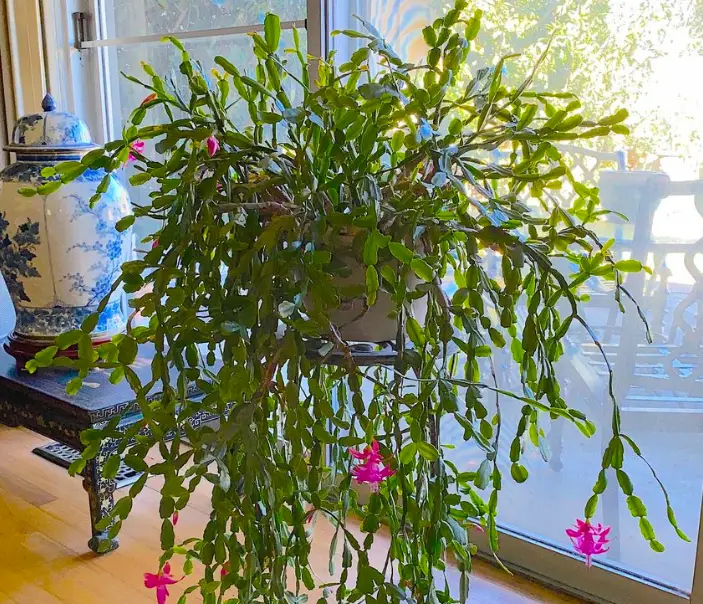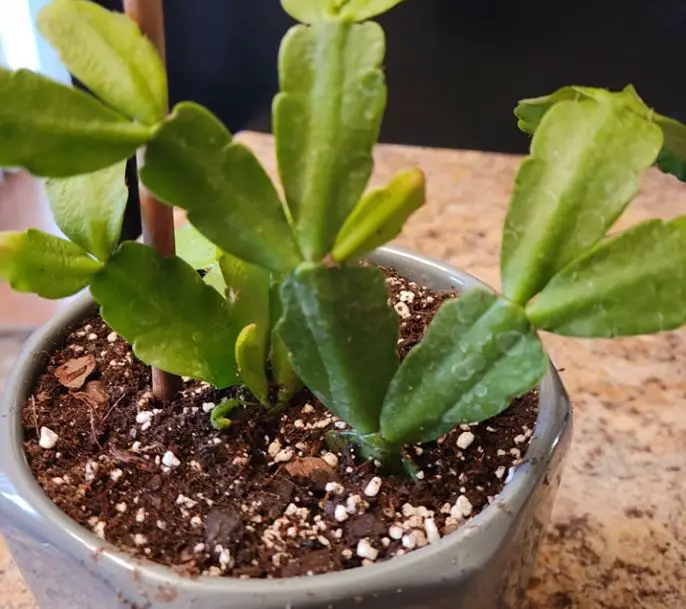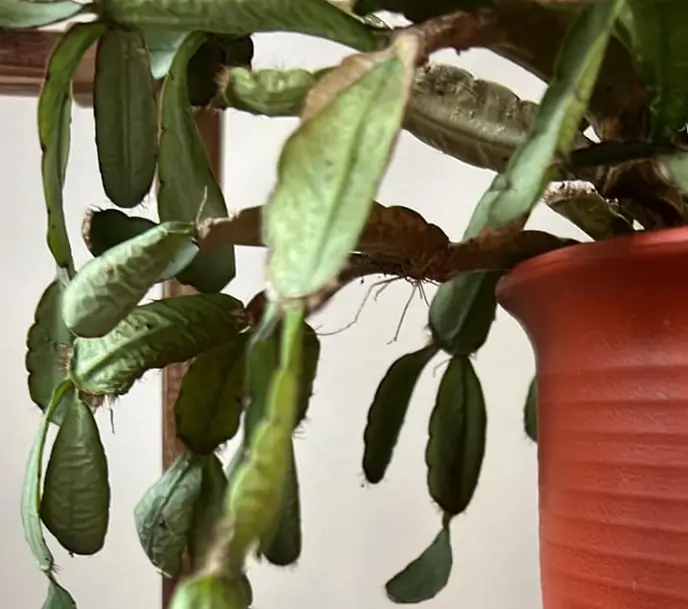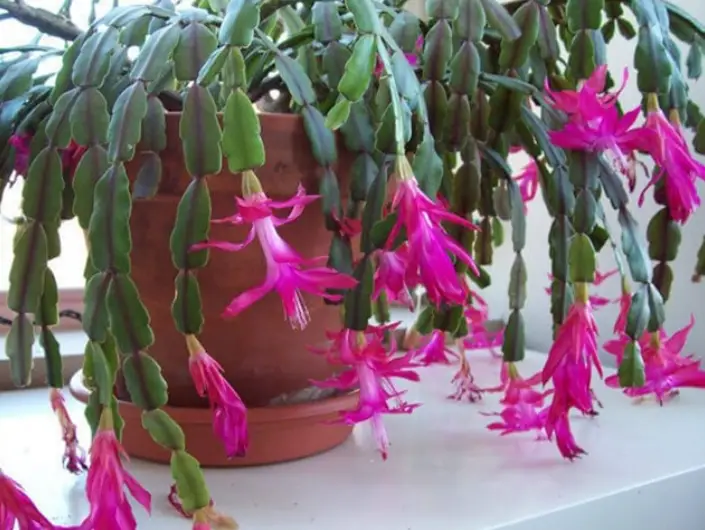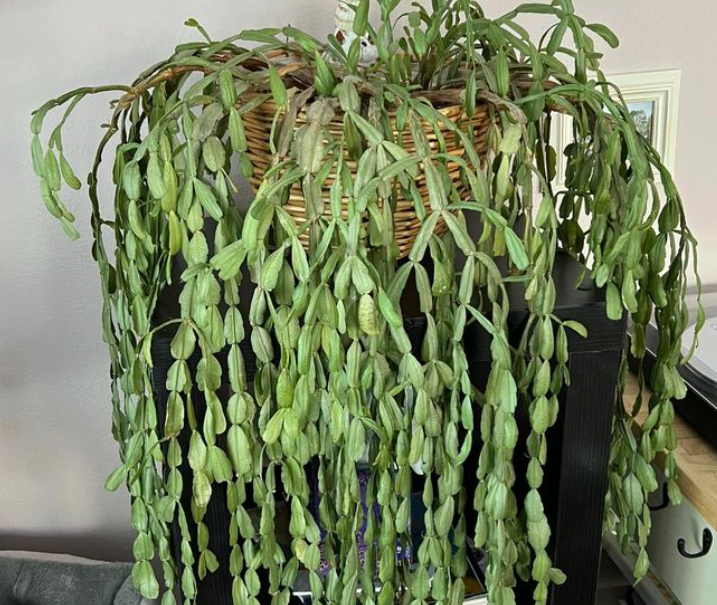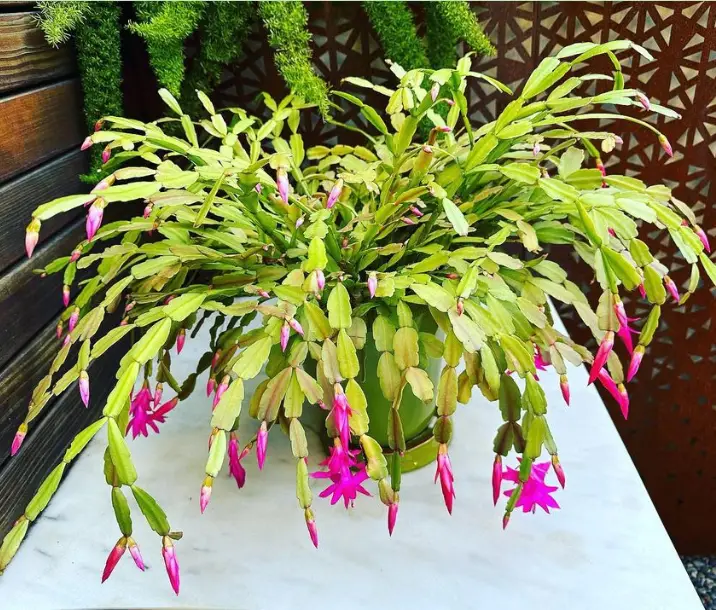Yellow Spots on Christmas Cactus: Reasons & What to Do
The Christmas cactus is characterized by fleshy flat, segmented stems that are typically green. New growth on the plant may start red on the tip of the stem. Unusual spots on the leaves can be a sign of several issues that are affecting the plant’s health.
Yellow spots on a Christmas cactus might form due to pests, sunburn, and fungal or bacterial diseases. On the other hand, a whole Christmas cactus turning yellow may be linked to nutrient deficiency, repotting shock, or overwatering.
Reasons for yellow spots on a Christmas cactus
Yellow spots on Christmas cactus leaves are visually unappealing and a sign that your plant is undergoing some kind of trauma. The following are possible causes of this problem:
Direct sunlight
Christmas cacti are epiphytic plants adapted to shaded areas. They typically prefer bright indirect sunlight. Exposure to direct sunlight may cause yellow spots. Christmas cactus leaves turning purple or red is also a sign of sunburn.
How to Fix
You can easily solve this problem by moving the plant to a place with bright sunlight. An east-facing window is an ideal location for indoor-grown Christmas cacti. You may also use sheer curtains to reduce the intensity of light your plant is getting.
Blocking the light completely is also not healthy for the plant. Your Christmas cactus will turn sickly and pale yellow when it does not receive enough light. Remember, light is very important for photosynthesis in green plants.
Insect pest
Tiny bugs in houseplant soil and small insects on the stems of the cactus can cause damage to the stems resulting in yellow spots. Mealybugs, whiteflies, spider mites, fungus gnats, and scale insects are very common on cacti plants.
Insect pests punch tiny holes into the cactus stems to suck the sap. This damages the plant and exposes it to fungal and bacterial infections. Without proper treatment, the affected plant may wilt and die.
How to Fix
Treating pests on a houseplant is delicate, as the products used may harm the plant. Washing your Christmas cactus with a strong strand of water may send away the bugs. You may remove visible pests with a cotton swab dipped in isopropyl alcohol.
Agricultural soap and oils like neem can also be sprayed on the cactus to kill the pests. Be sure to use as directed on the product label.
Infections
Christmas cactus is prone to various bacterial and fungal infections. Common symptoms include spots on the leaves, plant drooping, and dieback of stems. While some infections are linked to pests, they can also be caused by poor growing conditions.
Overwatering and poor ventilation are major causes of fungal infections in cactus plants. Common bacterial and fungal infections on a Christmas cactus include the following:
- Fungal leaf spots: Bright yellow, orange, or red spots on the stems or leaves
- Bacterial leaf spots: Small dark brown to black spots with a ring of yellow tissue surrounding each spot.
- Powdery mildew: Pale yellow leaf spots that quickly expand into large blotches
- Anthracnose: Tan or brown irregular spots on the cactus stem segments
How to Fix
Removing the infected parts is the best way to treat bacterial and fungal infections on a Christmas cactus. This stops the disease from spreading to other parts of the plant. The next step is to identify the disease and apply a fungicide accordingly.
Infection in plants can be very difficult to treat. It’s best to prevent them instead.
- Avoid overwatering your Christmas cactus so air can freely circulate through the plant roots. Water the cactus only when the top inch layer of the soil feels dry.
- Ensure the cactus is planted in a well-draining soil mix and the pot has a draining hole at the bottom.
- Place your plant in a well-ventilated place with bright indirect sunlight.
- Inspect your plant for pests and provide early treatment for infestations.
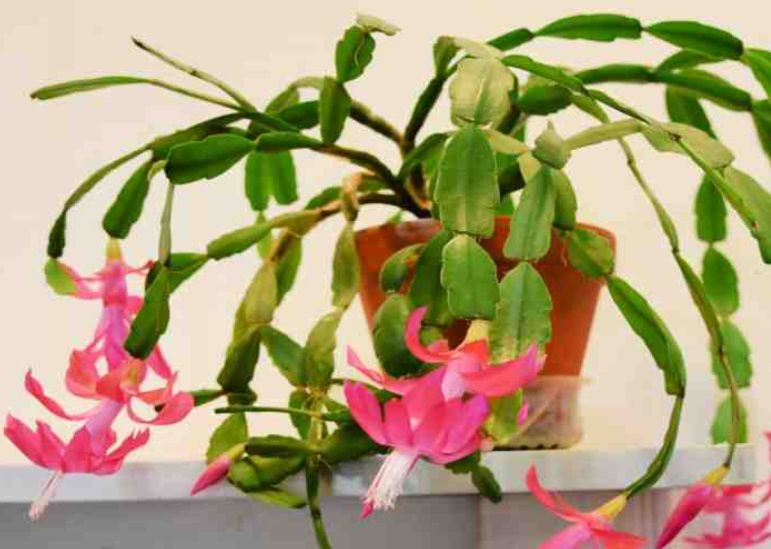
Christmas cactus turning yellow
A whole Christmas cactus turning yellow should be a great concern. This could be a sign that your Christmas cactus is dying. The following are potential reasons for this problem.
1. Malnutrition
Like other plants, a Christmas cactus needs nutrients for growth and blooming. Lack of nutrients in the soil will make the plant turn yellow, drop leaves, and stop growing. This a serious distress condition that needs immediate intervention. If this is the main issue, fertilizing will revive your plant.
The fertilizer requirements for a Christmas cactus vary depending on the season. Ideally, fertilize your Christmas cactus on a monthly basis with a recommended liquid houseplant fertilizer. This should be from when the plant enters active growth in spring through summer.
Additionally, apply magnesium sulfate (Epsom salt) mixed at 1 teaspoon per gallon of water monthly but a week after regular fertilizer.
2. Overcrowded roots
Roots get overcrowded when they outgrow the provided pot. Although Christmas cacti like to be root-bound, the roots might get overcrowded and unable to absorb nutrients. Like malnutrition, the plant will lack important supplies and become sickly yellow.
To fix this problem, repot your Christmas cactus in a slightly larger pot, preferably in spring when the plant enters active growth. Use a well-draining soil mix and a pot with a draining hole.
3. Transplant shock
Repotting solves overcrowded root problems or rejuvenates a houseplant that has been in the same pot for a longer time. Your Christmas cactus might turn yellow as a result of the transplant shock. The plant may take a few days to adapt to the new media before it picks up again.
To minimize the risk of transplant shock, use the same type of soil when repotting a Christmas cactus. Transplant when the plant enters a growing season and water regularly but not excessively.
4. Underwatering
Unlike desert cacti, Christmas cactus needs constant moisture in the soil to survive. Water is essential in the process of photosynthesis. Underwatered Christmas cactus will start turning yellow and eventually wilt and die because the plant can’t make its food as needed.
Generally, how often to water a Christmas cactus will depend on various environmental factors. The plant needs more water in spring and summer and less during winter.
Final Thought
A Christmas cactus is an easy plant to care for, but it’s also easy to make a few mistakes that might affect the plant’s health and growth. Yellow spots on Christmas cactus leaves is commonly a sign of distress when the plant is facing a problem.
Identifying the cause and taking appropriate action to save the plant is important. Ensure the plant gets the right amount of water, light, and nutrients. Additionally, inspect the plant for pests and diseases and treat them accordingly.
References
- North Carolina University Extension: Christmas Cactus Care
- Texas A&M University: Christmas Cactus
- Chicago Botanical Garden: Plant Information – Christmas cactus
My name is Diane M Lewik, and I am the founder of this website. I am a degree holder in plant biology from the University of California – Berkeley. Over the years, I have cultivated a vast collection of succulents and I have learned a great deal about how to grow and care for these unique plants. Feel free to ask any questions in the comment section below.
